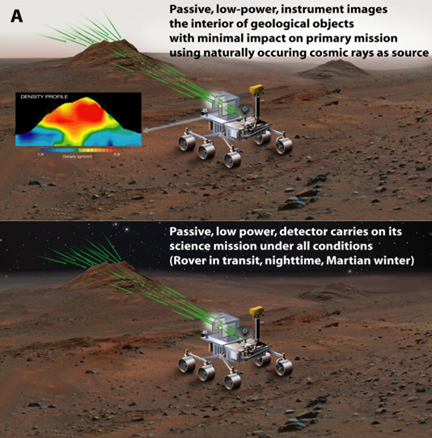Muon Tomography in Mars
Preliminary estimates of muon production on Mars indicate that the near horizontal Martian muon flux, which could be used for muon radiography, is as strong or stronger than that on Earth, making the technique suitable for exploration of numerous high priority geological targets on Mars. The high spatial resolution of muon radiography also makes the technique particularly suited for the discovery and delineation of Martian caverns, the most likely planetary environment for biological activity. The installation of muon detectors in rovers sent to Mars would allow a better understanding of the numerous geological structures observed on the Martian surface.
As a passive imaging technique, muon radiography uses the perpetually present background cosmic ray radiation as the energy source for probing the interior of structures from the surface of the planet. The passive nature of the measurements provides an opportunity for a low power and low data rate instrument for planetary exploration that could operate as a scientifically valuable primary or secondary instrument in a variety of settings, with minimal impact on the mission’s other instruments and operation. As the tomography does not depend on sunlight, the work can continue under any weather conditions.
Publication:
"Muon radiography for exploration of Mars geology" (Kedar et al., 2013)
